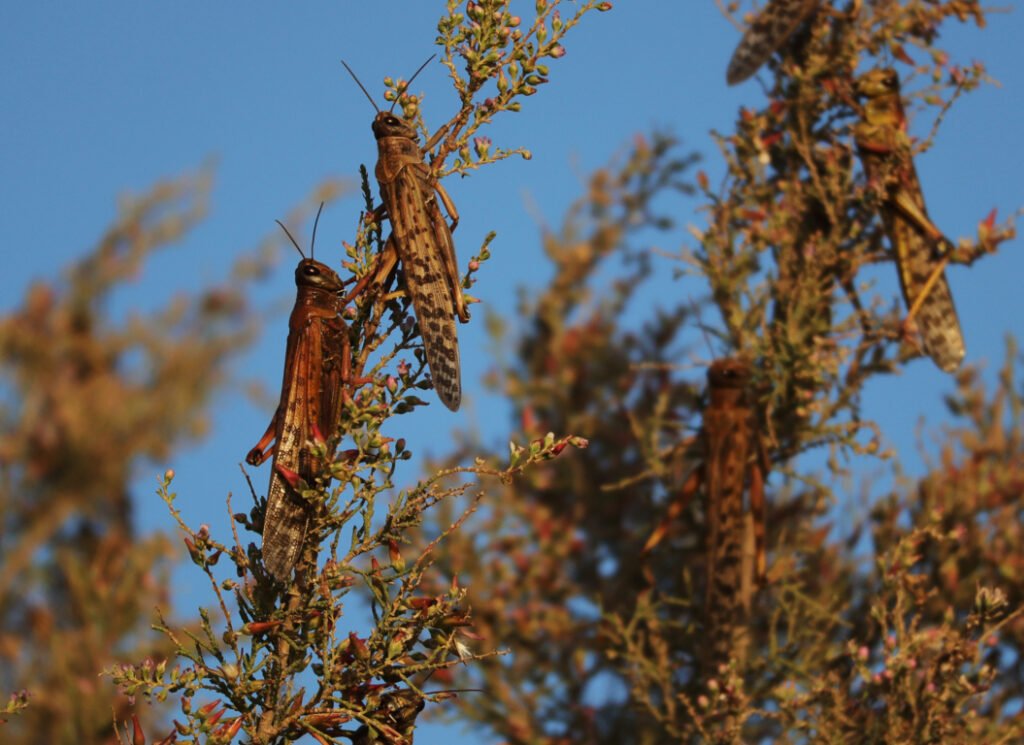
We’ve all seen them, the buzzing and fluttering of wings as they jump and hover around in our gardens. But have you ever stopped to look at them closely? Have you ever wondered what kind of garden insect you’re looking at? Is it a locust? A grasshopper? Or perhaps a cicada?
Now, you may think they were just your average creepy crawlies, but oh no, these three were not just any ordinary insects. They each had their own unique personalities, quirks, and habits that set them apart from one another.
This guide on Locust vs Cicada vs Grasshopper aims to help you identify these three common garden insects and how they differ from one another.
So, let’s delve into details and find out how these three species differ from one another on the basis of appearance, eating habits, sound, and characteristics.
Physical Identification – Locust vs Grasshopper vs Cicada
The physical characteristics of locusts, grasshoppers and cicadas can often lead to confusion. These three types of insects all belong to the order Orthoptera and look quite similar, yet they also have distinct differences that make them easy to distinguish between. Let’s take a closer look at each of these creatures and find out what sets them apart.
Locust
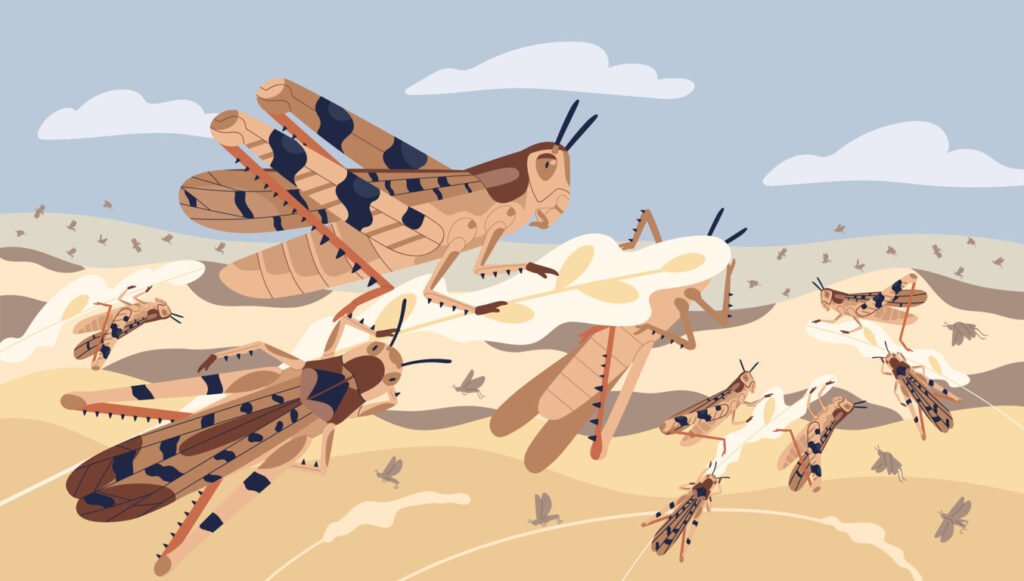
The mighty locusts are known for their destructive reputation and ability to cause massive crop damage. Think of them as the villains of the insect world. But, behind every villain, there’s a story.
The locust is easily recognizable by its thick and spiky legs, making it look like a miniature bodybuilder. They’re also famous for their unique migratory patterns, traveling in massive swarms that can cover the sky for miles. Picture a stampede of tiny, spiky bodybuilders running through the fields!
Grasshopper
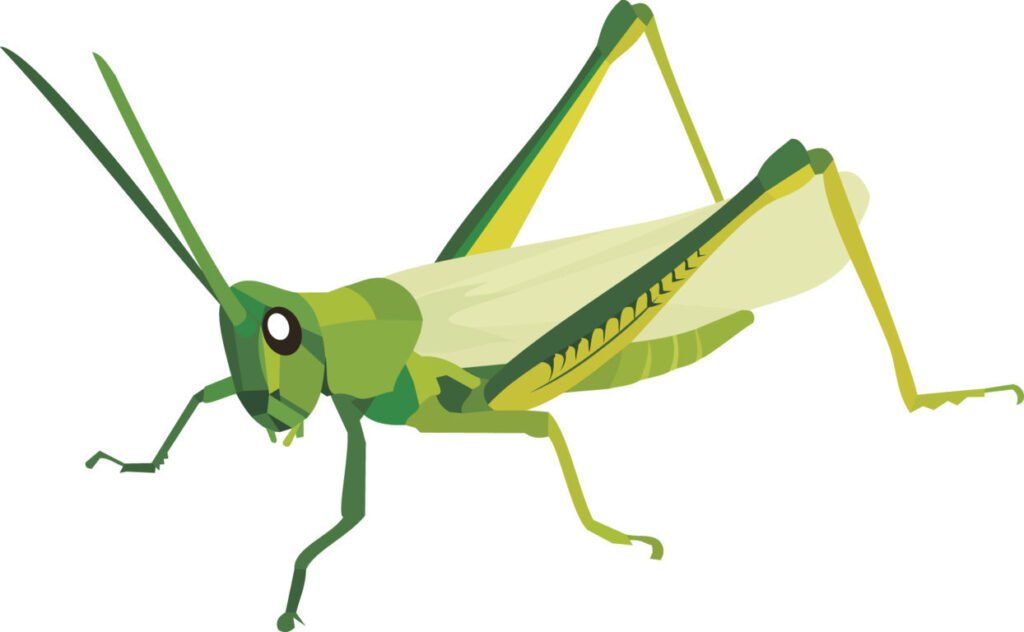
Then we have the cheerful grasshopper. These insects are often seen as the carefree creatures of the insect world, spreading joy wherever they go.
Grasshoppers are known for their long back legs that allow them to make incredible leaps and jumps, like tiny green and brown kangaroos! They’re also famous for their beautiful singing and chirping, especially on warm summer days.
These insects are often depicted as cheerful sidekicks in children’s books and movies, spreading joy and happiness wherever they go.
Cicada
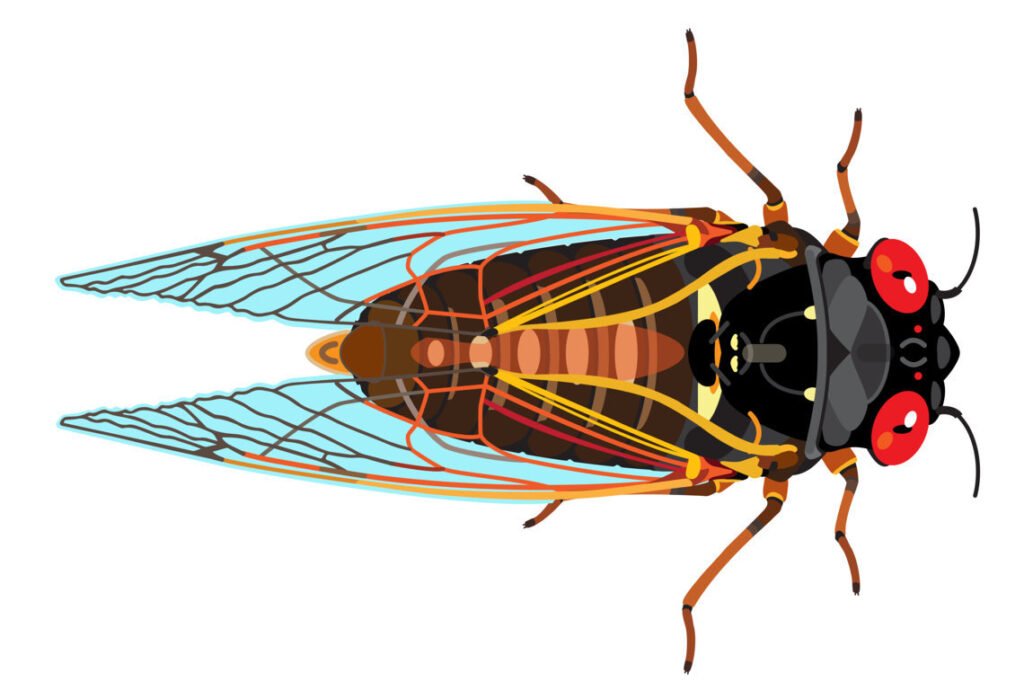
Last but not least, we have the mysterious cicada. These insects are known for their unique appearance, with their big, bulging eyes and transparent wings.
They’re also famous for their ability to make thunderous, shrill noises that can be heard for miles, like tiny rock stars. Cicadas are often depicted as the mysterious creatures of the insect world, appearing only once every few years to mate and make their presence known.
They’re the divas of the insect world, making a grand entrance and leaving us all in awe.
Movement, Wings, and Group Dynamics – Locust vs Grasshopper vs Cicada
Locusts have short wings that don’t cover their entire body, giving them a more streamlined look. Cicadas have wide wings that extend the length of their body and are often brightly colored. Grasshoppers, on the other hand, have wings that are a little longer than their bodies and can change colors depending on the angle of the light.
As for how they move, Locusts are known for their sluggishness and won’t jump as far or high as the other two species. Grasshoppers, on the other hand, are little acrobats and can make quick, successive hops. And then there’s the cicada, the flying wonder of the Orthoptera world, who can take short flights and produce a loud, buzzing sound that’s music to the ears of anyone who loves summertime.
Lastly, let’s talk about group dynamics. Locusts are the ultimate party animals and love to swarm in massive numbers, chowing down on crops and causing all sorts of chaos. Grasshoppers and cicadas, on the other hand, are more the lone wolves of the insect world, content to live a solitary life.
Locusts, grasshoppers, and cicadas may seem similar at first glance, but once you start paying attention to the details, you’ll see that each of these insects has its own unique qualities that set it apart from the others. So remember – size, wings, movement, and social habits are key to properly identifying these insects.
The Different Life Stages of Locust, Grasshopper and Cicada
Most people know locusts, grasshoppers, and cicadas as some of the more common backyard insects. But many don’t know that locusts, grasshoppers, and cicadas have very different life stages. Here’s a breakdown of what they go through:
Locusts
Picture a baby locust, hatching from its egg and peeking out of its shell, ready to take on the world. But wait, where’s the party? Where’s the food? Where’s the shelter? It’s a rough start for these little guys as they venture out into the big, imperfect world. But with each molt, they get a little bigger, a little stronger, and eventually, they grow wings and can soar through the skies in search of their next meal. Talk about a quick turnaround!
Grasshoppers
Grasshoppers start small, but they have big dreams. From the moment they hatch, they’re chowing down on plants and growing like crazy. Every time they molt, they get a little closer to their ultimate goal: flying around, finding a mate, and living a good life. And when they finally spread their wings and take off, they’re like tiny superheroes, soaring through the sky in search of adventure.
Cicadas
Cicadas are the true survivors of the insect world. They hatch from their tiny and vulnerable eggs and then spend the next few years underground, munching on tree roots and biding their time. But when the moment is right, they emerge, fully formed and ready to take on the world. With wings that can dry and harden in a matter of minutes, these insects are ready for anything.
And let’s talk about their mating rituals! Cicadas have the most impressive serenade, with males singing loudly to attract a female, and females responding with a softer tune. It’s like a symphony in the trees, and it’s enough to give even the toughest bug-hater the feels.
So there you have it, folks! The incredible life cycles of locusts, grasshoppers, and cicadas. Who knew these backyard insects were so fascinating? Whether hatching from their eggs, munching on plants, or serenading their mates, these insects are always on the move, growing, and adapting to survive. And that’s something to admire.
Eating Habits – Locusts vs Grasshoppers vs Cicadas
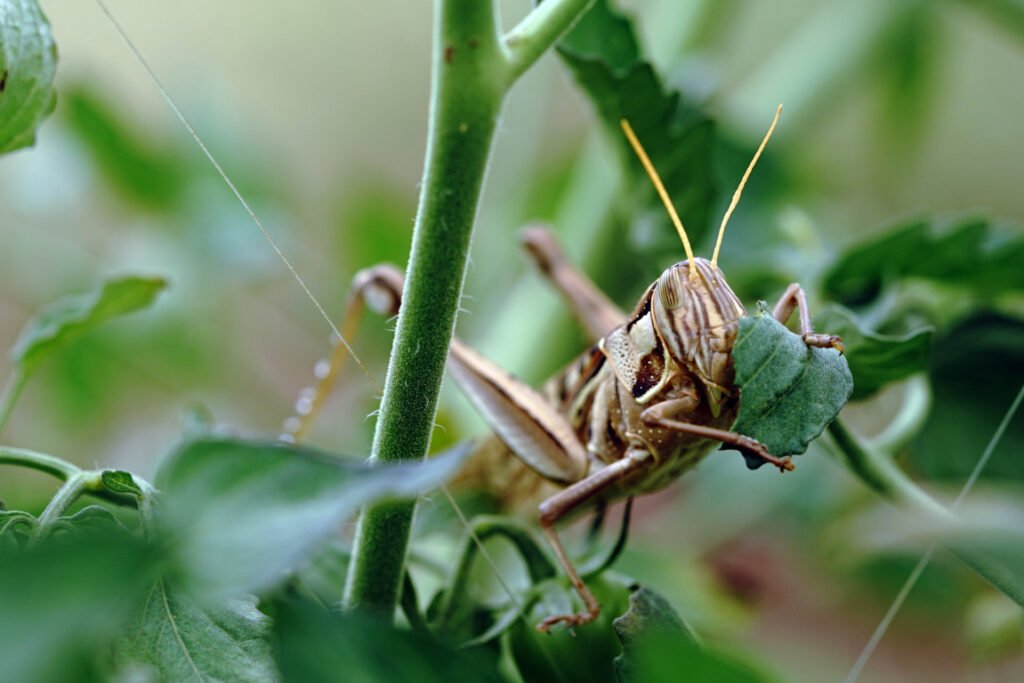
It’s time to lift the veil on the dining habits of the locust, grasshopper, and cicada. Despite belonging to the same family (Orthoptera), these insects have developed quite different tastes.
The locust: A Foodie with a bottomless pit for a stomach
Oh, the locust. This little bug is known for its insatiable appetite, and its reputation as the gourmet of the Orthoptera family is well-deserved. Whether it’s a succulent leaf, a juicy fruit, or an unsuspecting insect, the locust is ready to chow down. In fact, it’s not uncommon for a locust to eat its own body weight in a single day! Whew! Now that’s a foodie for you!
The grasshopper: A leafy green-loving vegan
On the other hand, the grasshopper takes a more relaxed approach to dining. This peaceful herbivore is content with a diet of leaves, twigs, bark, flowers, and other vegetation. And while it’s true that grasshoppers are known to nibble on the occasional insect larvae or egg, they mostly stick to their plant-based roots.
The cicada: A sweet tooth
Last but not least, we have the cicada. This little guy is all about the sweet life – from sap to nectar, it’s all about that sugary goodness. And the cicada doesn’t discriminate – it’ll take its sugar fix from flowers, trees, fruits, and even alcoholic beverages.
Destruction – Grasshopper vs Locust vs Cicada: Who’s the Real Menace?
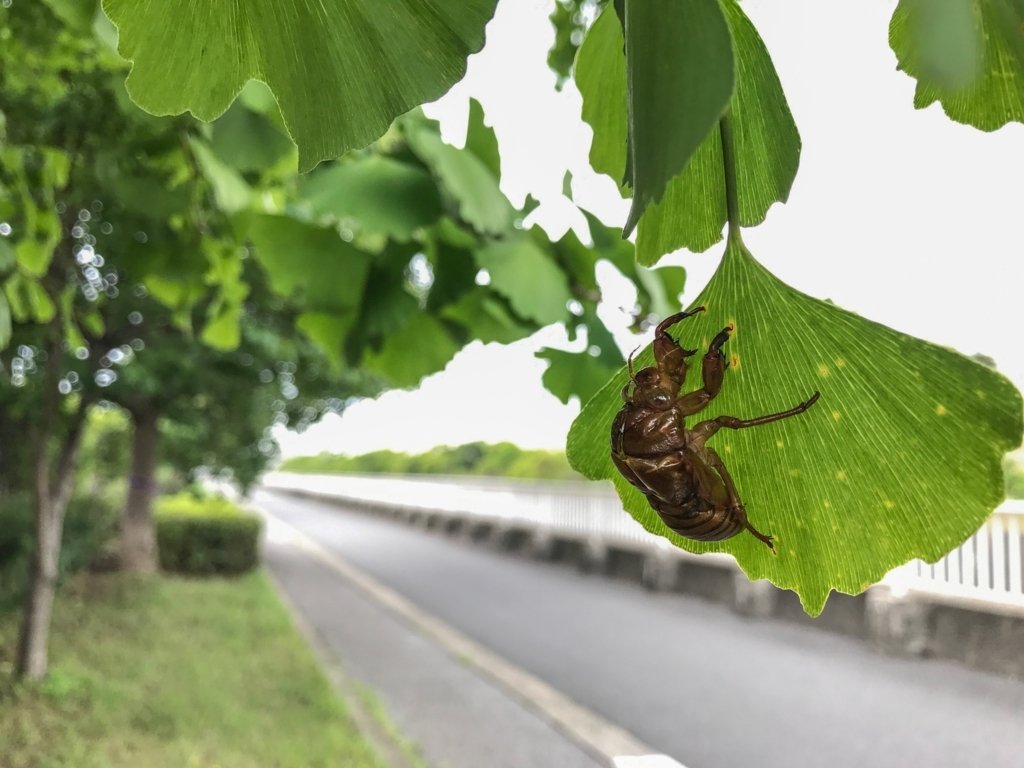
Though all three species may be considered pests, some key differences set each of them apart. From how much destruction they can cause to how they feed and reproduce, let’s take a closer look at how these tiny creatures differ.
Grasshopper
The lovable but sometimes destructive Grasshopper – These green jumpers have been known to cause a bit of a fuss in the fields. But let’s be real, they’re just trying to live their lives and feed on some tasty leaves and grass. The only problem is, if they all get together and decide to have a party, they can cause a bit of damage to crops. They feed primarily on leaves, grasses, and other vegetation that grows near the ground.
Locust
Locust, the superstar of destruction. This species is the heavyweight champion when it comes to eating and destroying. Imagine if you and all your friends went to a restaurant and ordered everything on the menu, times a hundred. That’s what the locust does to crops when it travels in its massive swarms. And if that’s not enough, they can lay hundreds of eggs that can fly for miles and hatch into even more locusts.
Cicada
Last but not least, we have the Cicada, the oddball of the group. These insects look similar to the grasshopper, but instead of feasting on vegetation, they prefer a more refined diet of tree sap. While they might not cause as much destruction as the locust, they do have their quirks.
For one, they love to make loud buzzing sounds that can be quite irritating to humans. And let’s not forget, they tend to bore tiny holes into trees, leaving them looking like they’ve been through a cheese grater.
So, who’s the real menace? It’s hard to say, but one thing’s for sure, these insects are full of surprises and personalities. Whether they’re munching on leaves, swarming crops, or drinking sap, they’re sure to keep us entertained and amazed.
Measuring the Chirpings – Cicada Sound vs Locust Sound vs Grasshopper Sound
What would those hot days be without the accompaniment of chirping and buzzing from our insect friends? Cicadas, locusts, and grasshoppers – these critters often make their presence known with a cacophony of sound. But which species is the loudest, and what makes their noise so different? Let’s explore who’s the loudest between cicadas, locusts, and grasshoppers.
Cicadas: A high-pitched humming symphony
Cicadas reign as some of the loudest culprits when it comes to summertime bugs. Their sound has been likened to a shrill buzzing or humming noise, which is actually created when vibrating membranes on their abdomens rub against each other. This process, known as stridulation, produces high-pitched sounds reaching up to 90 decibels – the equivalent of a deafening rock concert.
Most cicadas produce a consistent noise, though some species can also vary their pitch or speed. While they sing throughout the day and night, they tend to be most active during sunny afternoons when temperatures are at their peak.
Locusts: An intense roar of noise
Unlike cicadas, locusts don’t rely on vibrating membranes to make their noise. Instead, they rub two hard plates at the base of their abdomens together, producing a much higher decibel level – up to 90! This intense roar can be heard from far away and is described as having low-frequency elements that give it an almost metallic sound. This is basically a mating call, and it’s most active during the day.
Grasshoppers: A chirping melody
Grasshoppers use thick veins in their wings to produce sound. When they rub these veins together, it produces a much more melodic chirping sound, which is most active during the day. While their noise is generally not as loud as cicadas or locusts – usually around 50 decibels – they can still be heard from quite far away and are known to produce some of the sweetest-sounding insect noises in existence.
How to get rid of Locusts, Cicadas and Grasshoppers
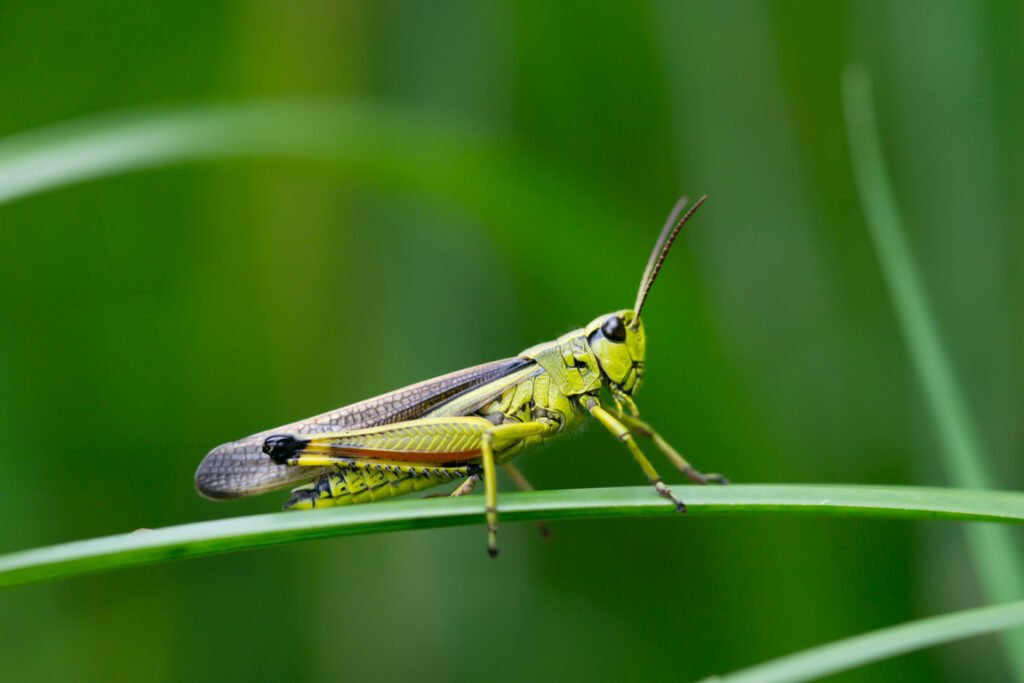
Dealing with locusts, cicadas, and grasshoppers can feel like a never-ending battle, especially for farmers and gardeners. But, have no fear! You can take steps to get rid of these persistent pests and protect your crops, gardens, and homes.
1. Know your enemy:
The first step in defeating these pests is identifying which type you’re dealing with. Each insect has its own unique appearance, behavior, and habits. For example, locusts are notorious for devouring crops in large swarms, while cicadas are known for their loud buzz and love of tree sap. Knowing the type of pest will help you determine the best plan of attack.
2. Cut off their supply chain:
The next step is to remove any potential breeding grounds for these pests. This includes clearing away piles of debris, maintaining a well-manicured lawn, and trimming overgrown vegetation around your property. You should also eliminate standing water, which is a popular place for insects to lay their eggs.
3. Use natural repellants:
Why settle for chemical insecticides when you can go natural? Repellents like garlic, onion, and chili powder are safe for people and pets and can effectively ward off pests. Additionally, planting herbs like rosemary, mint, and basil in your garden can act as a barrier, keeping pests at bay.
4. Lure them away:
Traps and baits can be a great way to lure pests away from your property. Just remember to choose traps and baits designed specifically for the type of pest you’re dealing with. Otherwise, you might end up with a lot of hungry insects and no results.
5. Use chemical warfare:
Sometimes, natural methods just won’t cut it. When all else fails, insecticides may be necessary to completely eliminate the infestation. Just read the labels carefully and only use products approved for the specific type of pest you’re dealing with.
With these steps, you’ll be well on your way to reclaiming your property from the clutches of these pesky insects. Always take safety precautions when using insecticides and follow the instructions on the label. Good luck!
Conclusion
Insects come in all shapes and sizes. While locusts feast on crops, grasshoppers and cicadas are more fond of plants. All three have remarkable jumping abilities that can take them up and away from danger. And when it comes to their ears, locusts hear low-frequency sound waves, grasshoppers listen to middle-range frequencies, and cicadas latch onto the highest notes. Each one is unique in their own way!
But perhaps the most remarkable feature of locusts, grasshoppers, and cicadas is that they’ve been around for millions of years – outlasting even our own species. So the next time you encounter one of these fascinating creatures, take a moment to marvel at their impressive feats!
So, that concludes our guide on “Locust vs Grasshopper vs Cicada” – we hope you’ve enjoyed learning about these three species and how they differ. Until next time, stay curious!
Frequently Asked Questions (FAQ)
Are locusts the same as cicadas?
No, locusts and cicadas are not the same. Although they may appear similar in size and shape at first glance, there are significant differences between the two species. Locusts are typically larger than cicadas and feed on grasses or other vegetation, while cicadas primarily feed on tree sap.
Do cicadas turn into grasshoppers later?
No, cicadas do not turn into grasshoppers later on. While they look similar in size and shape, cicadas and grasshoppers are two different species of insect.
What are the lifespan differences between locusts, cicadas, and the grasshopper?
The lifespan of locusts, cicadas, and grasshoppers varies greatly. Locusts typically live for up to 10 weeks, whereas cicadas can live for several years, depending on the species. Grasshoppers can survive for a year.



